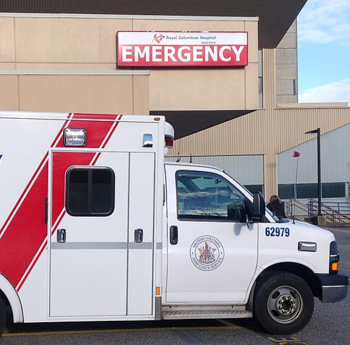How to Avoid Overcrowding in Emergency Departments
Data analytics and accountability are key, according to researchers at Oregon Health and Sciences University.

Using Centers for Medicare and Medicaid Services data from over 2,600 US hospitals, as well as interviews from 60 professionals at a dozen hospitals, researchers have put together a study that identifies 4 key steps to alleviate crowding in emergency rooms (ED).
ED overcrowding is an industry-wide problem, and was identified as an issue for hospitals both rural and urban. It can be dangerous, causing delays in treatment that can lead to exacerbated conditions.
“We know the risk of death is higher when the emergency department is more crowded than when it’s less crowded,” said author Benjamin Sun, MD, of Oregon Health and Sciences University (OHSU), in a statement. The work was led by researchers at OHSU, as well as others from Thomas Jefferson University in Philadelphia. It classifies itself as a mixed-methods comparative case study, grouping the hospitals from the CMS data by low-performing, high-performing, and high-performing performance improving based on ED stay time. The team then focused in on 4 hospitals from each classification, and leaders at each were interviewed.
The authors note that their research did not identify any one specific intervention present at the best-performing and absent in the worst-performing EDs, but that there were “identifiable and actionable changes that other hospitals may incorporate to build awareness of ED crowding.”
The changes were often systemic, and are as follows:
1. Involvement of executive leadership
The work indicates that executives at the hospital ERs deemed low-performing “did not prioritize crowding initiatives, despite acknowledging the causes," and that such inaction caused heads of those under-performing departments to feel isolated. They recommend EDs be prioritized and given clear goals and resources to achieve them.
2. Hospital-wide coordinated strategies
This recommendation took aim at silos, a common problem in many respects of healthcare.
Instead of waiting for the room to go from dirty to clean and then to book transportation for a patient to come, we started doing things in parallel so that we would cut down on waiting time," one hospital executive told the authors.
3. Data-driven management
Gathering and analyzing data constantly can go a long way to improving ED wait times, and may help to create the aforementioned coordinated strategies. Rather than data only being discussed occasionally, by executives, and in retrospect, the authors suggest it be immediately accessible to front-line caregivers in order to adjust operations in real-time.
4. Performance accountability
Perhaps an obvious, but essential, reminder was that leaders high-performing hospitals immediately acted upon concerns of overcrowding.
"If boarding in the ED exceeded the acceptable limit, the chief medical officer would physically get out of the office, go onto the ward floors, and start reviewing charts and asking, 'What can we do to fix the problem?'" one interviewed executive said in the study.
The study, “Hospital Strategies for Reducing Emergency Department Crowding: A Mixed-Methods Study,” was published in Annals of Emergency Medicine, and accompanied by a statement from OHSU.